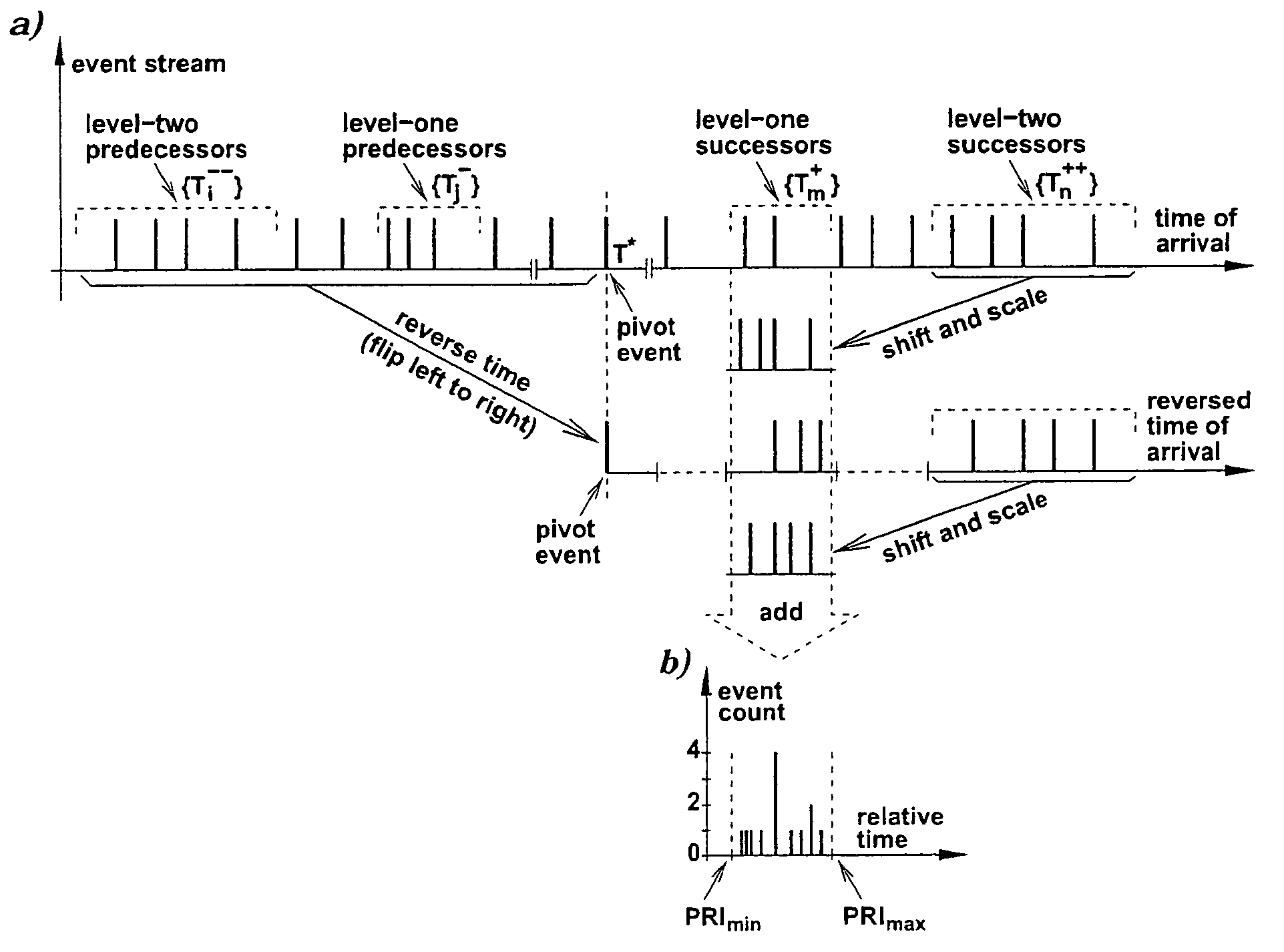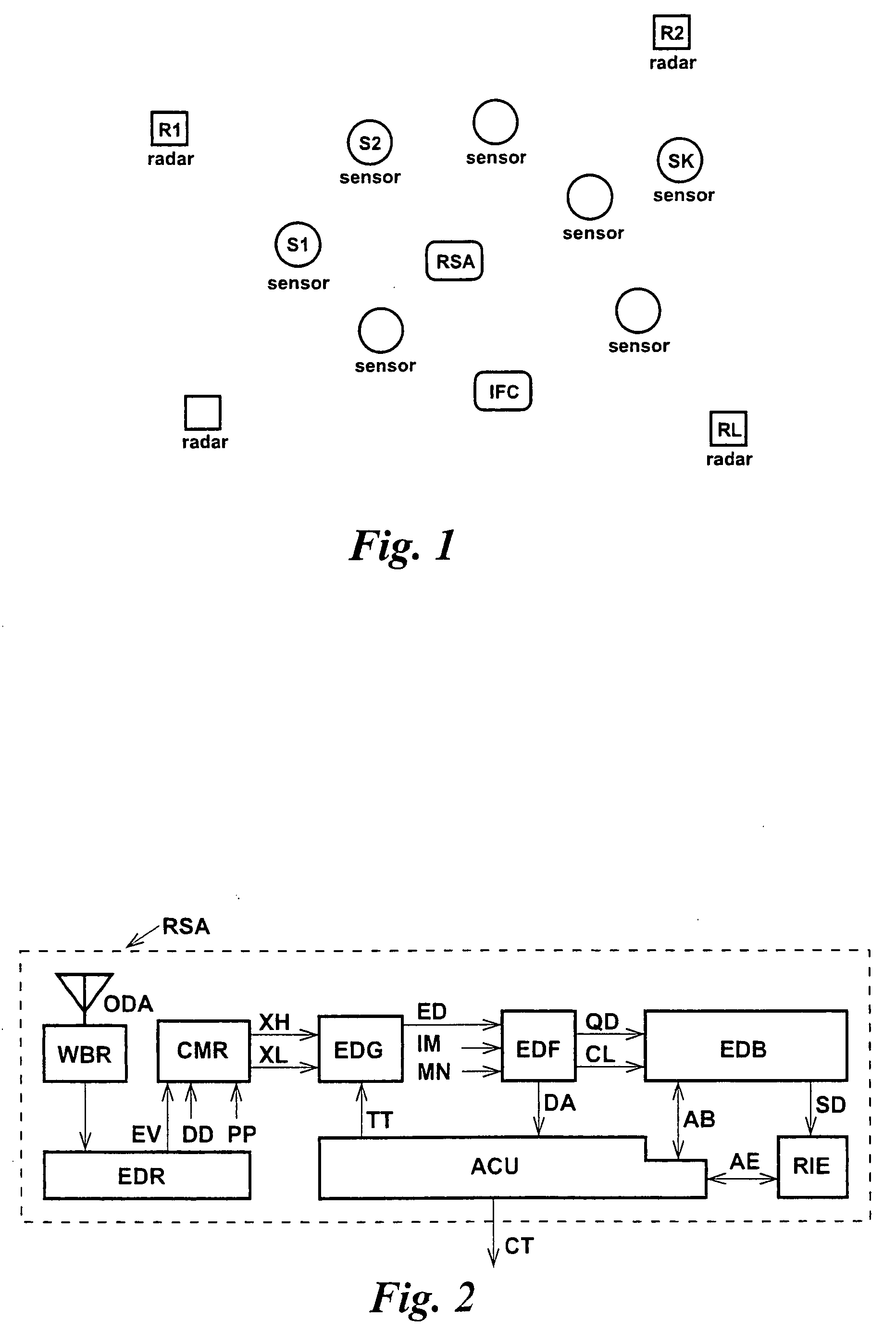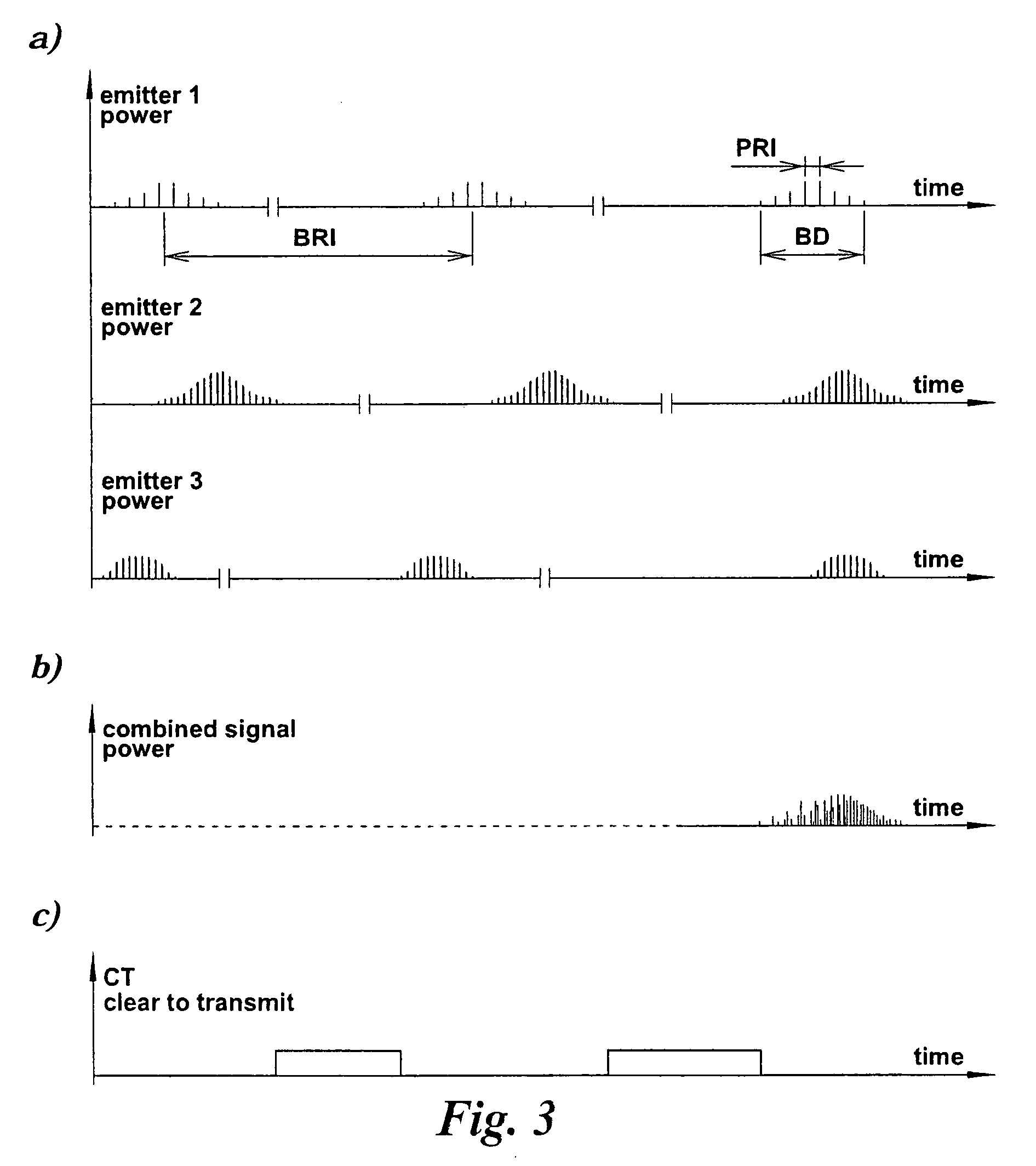Analysis of trains of pulses
a pulse train and pulse technology, applied in the field of method and apparatus for analysing and classifying events, can solve the problems of false pulses, no specific method given for intercepting and analysing composite electromagnetic signals to determine the parameters of radar signals, and none of the prior-art techniques are capable of determining the characteristics of interleaved radar pulses, etc., to achieve statistically more accurate results
- Summary
- Abstract
- Description
- Claims
- Application Information
AI Technical Summary
Benefits of technology
Problems solved by technology
Method used
Image
Examples
Embodiment Construction
[0048]FIG. 1 depicts an example of a security surveillance system that comprises a constellation of suitable sensors, S1, S2, . . . , SK, dispersed over some region of interest, and an information fusion centre IFC. The constellation may utilize either passive or active sensors, or a combination of those. Furthermore, sensors forming the constellation may be disparate, e.g., acoustic, infrared or electromagnetic.
[0049]A wideband radar signal analyser RSA is also utilized by the sensor constellation.
[0050]It is assumed that there is provided a wideband communication channel available for high data-rate information exchange among the sensors and the information fusion centre. It is also assumed that in the vicinity of the sensor constellation there are operating surveillance radars, R1, R2, . . . , RL, that for their transmission utilize (at least partly) frequency bands coinciding with those forming the wideband communication channel.
[0051]It is also assumed that each of the surveill...
PUM
 Login to View More
Login to View More Abstract
Description
Claims
Application Information
 Login to View More
Login to View More - R&D
- Intellectual Property
- Life Sciences
- Materials
- Tech Scout
- Unparalleled Data Quality
- Higher Quality Content
- 60% Fewer Hallucinations
Browse by: Latest US Patents, China's latest patents, Technical Efficacy Thesaurus, Application Domain, Technology Topic, Popular Technical Reports.
© 2025 PatSnap. All rights reserved.Legal|Privacy policy|Modern Slavery Act Transparency Statement|Sitemap|About US| Contact US: help@patsnap.com



